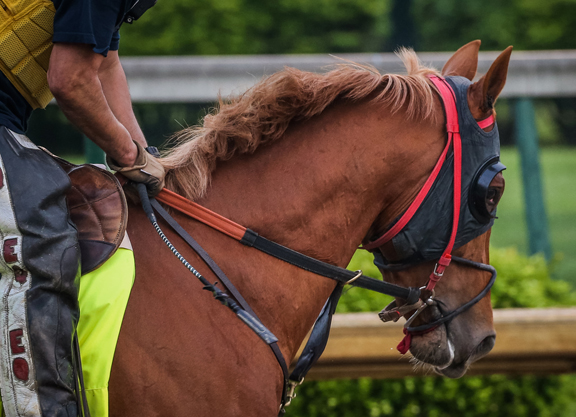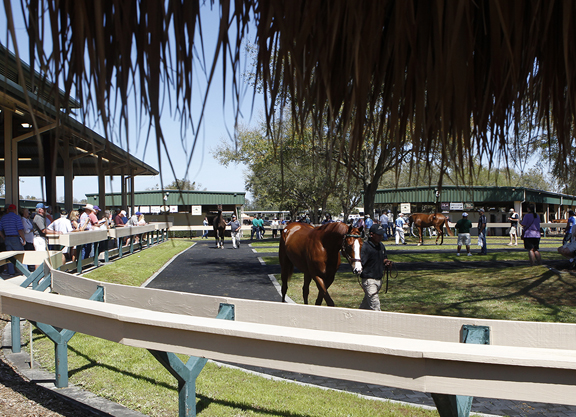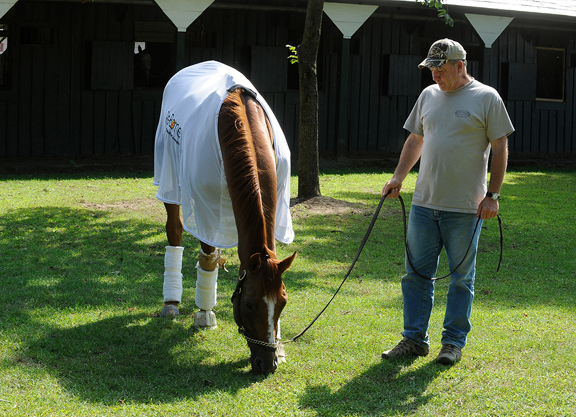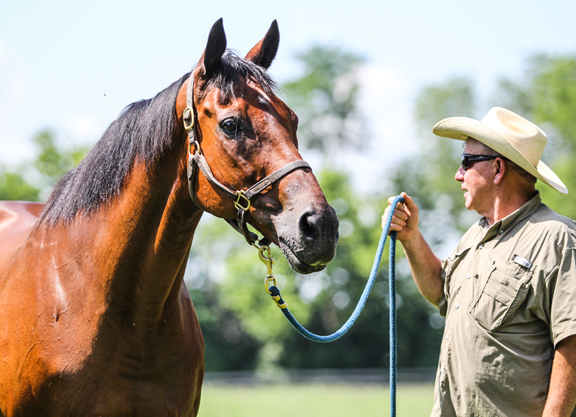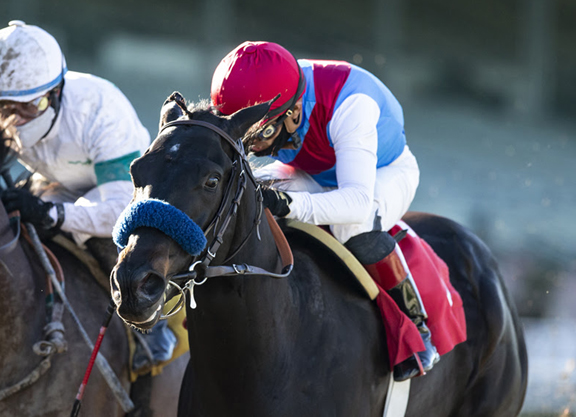Don't know about you, but I'm not really looking for a Hall of Fame horse out there. I would gladly settle for the one of those blurred snapshots of the adolescent sophomore crop, with plenty left to play for in the Preakness. Just so long as we can guarantee an evening of uncomplicated euphoria for connections of the fated horse among 20 who have already confounded the odds even to enter the gate for the GI Kentucky Derby (presented by Woodford Reserve).
Because they will be able to tell you, Saturday evening, that there's no such thing as an ordinary Derby winner. Okay, so this is not quite the race we pictured a few weeks ago, when Life Is Good (Into Mischief) and Greatest Honour (Tapit) and Concert Tour (Street Sense) seemed to be trapping champion Essential Quality (Tapit) in an asphyxiating triangle of brilliance. But nothing makes a backstretch professional madder than pundits announcing, even as the winner is hosed down, that this looks like it must have been an “average” Derby. If you think a Grade I race of any description can ever be easy, just try winning one. And then come back to us.
That said, personally I would welcome like an old friend a fairly nondescript Derby this time. Because the strands embroidered into the fabric of the race over the past couple of years could really do with some support stitching that offers a little less color, and maybe a little more durability.
To many of us, it felt more important last year to stage the Triple Crown races on their usual dates than at their usual venues. As it was, Churchill's three priorities at the time appeared to be Churchill, Churchill and Churchill, and their unilateral postponement to September (ultimately unavailing, with the turnstiles still locked) rendered the series a nonsense, with a nine-furlong Belmont in June, and a Preakness shoehorned into October.
As for the melodrama of the previous year, and everything that has since happened to one of the central characters, I get a headache just thinking about it. And you know what, whatever the race may owe the owners of its first disqualified winner, connections of Country House (Lookin At Lucky) would probably find someday winning the damned thing “properly” no less cathartic.
Actually there was nothing too ordinary about the year before, either, albeit at the opposite end of the spectrum of edification. For Justify (Scat Daddy) performed a vital service for the breed in underscoring the recent rebuke of American Pharoah (Pioneerof the Nile) to those who had spent a generation peddling the heresy that a five-week Triple Crown had become obsolete. In fact, one of the incidental drawbacks of 2020 was that some, celebrating the intervals between races, were so quick to renew their complicity with the commercial erosion of the breed.
Somehow, then, this race finds itself on a streak of sensationalism. On the one hand, anything and everything that contributes to the Derby tapestry can only heighten the historic sense in both aspiration and achievement come the first Saturday in May. But right now it would feel great just to showcase some of the abiding virtues that have underpinned the breed, through good times and bad: above all, a fidelity to those attributes in the Thoroughbred that make this stampede–20 horses going flat out at the same, critical stage of their development, balancing speed and stamina on the fulcrum of the two-minute mark–the ultimate measure of its sustainability.
In other words, give me a hardboot winner.
This week our community grieved the loss of John T. Ward, Jr., 20 years after he saddled Monarchos to become the only Derby winner bar Secretariat to break two minutes. That was an old-school masterpiece, built on lore inculcated by two preceding generations: father, uncle, grandfather. Uncle Sherrill, for instance, had saddled his first winner at Kenney Park when just 18 and ended up ushering himself and Forego into the Hall of Fame.
Incidentally, colleague T.D. Thornton reminded us this week that Monarchos was followed by Giacomo four years later as the eighth gray winner. To say that Essential Quality would be ending a gray “drought” since, however, slightly overstates the matter from an English point of view. The Epsom Derby, first run in 1780, has been won by just FOUR grays–and none since 1946!
Arguably Ward's most significant legacy is Sky Mesa, as consistent a stakes sire as he is bred to be, Monarchos being one of many modern Derby winners to have disappointed at stud. Let's hope that promising starts by American Pharoah and Nyquist will help stop the rot, because we certainly we haven't had too many recent races like 2007, with a podium of Street Sense, Hard Spun and Curlin (not to mention Scat Daddy down the field).
The only horse in this whole field by a Derby winner is O Besos–and his sire, Orb, has just been sold to Uruguay, having been discarded virtually overnight by the market. From the family of Ruffian, I would love to see him have the last laugh on the fast-buck commercial breeders.
Hometown trainer Greg Foley certainly fits the hardboot bill. His late father Dravo, who started out as a jockey and then trained for 48 years, saddled 1,123 winners as a stalwart of River Downs and Hazel Park. He never did turn up an elite performer, but Greg's sister Vickie won the GI Woody Stephens S. a couple of years ago, with Saturday's GI Churchill Downs S. entrantHog Creek Hustle (Overanalyze), and Greg has also raised the bar: his 1,429 winners since 1981 are now headed by Sconsin (Include), in the GII Eight Belles S. at the “Derby” meet eventually staged last September and set to face Gamine (Into Mischief) in Saturday's GI Derby City Distaff.
O Besos has to buck the Derby speed trend, established since his sire came from the clouds, but looked made for a test like this when closing through the final three-sixteenths in the GII Louisiana Derby in :18 2/5. Okay, the six-week lay-off isn't exactly old-school, but O Besos has been working like a horse sitting on a breakout. And if you think a horse like this could only win an ordinary Derby, well, suits me: Cinderella had to be measured for a slipper, but a hardboot would do just fine.
The post This Side Up: If the Hardboot Fits… appeared first on TDN | Thoroughbred Daily News | Horse Racing News, Results and Video | Thoroughbred Breeding and Auctions.
